Jun 12, 2013
Hillwalking and sightseeing in Glendalough
Frédéric loves Dublin. Rather, the nature of Dublin that’s close to both the sea and the mountains, while at the same time it being a bustling capital city yet maintains a particular quiet charm that isn’t drowned out by the sound of city traffic. He sees a life where weekends away from the work desk are spent exploring the great outdoors, especially in the Wicklow Mountains, given the taster that he’d got when we went to Glendalough recently.
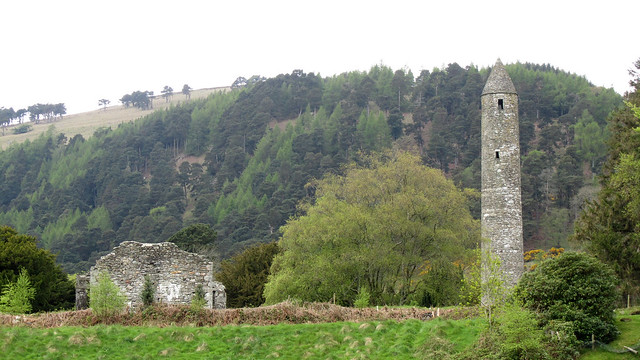

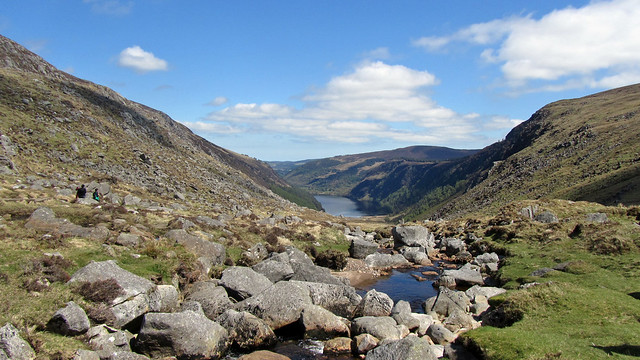
About an hour drive the south from Dublin city centre, Glendalough (i.e. glen of two lakes) is a former monastic city and today a popular site for visitors who are keen to see the traces left behind from the monastic heyday against the beautiful setting of the Glendalough Valley. We’ll come back to that a bit later in the post.
Our main aim of the day was to do some walking along a designated trail. Just beyond the Lower Valley, there are nine colour-coded walking trails that visitors can take with various degree of effort required, from the easy walks of about an hour or so, to the hillwalks that takes 3-5 hours plus a few hundred metres climb. Anyone who’s reasonably fit could do the hillwalks without any problem, and we didn’t need special gears either – just good and sturdy walking shoes, and rain gear in the bag just in case… it is Ireland we’re talking about afterall.


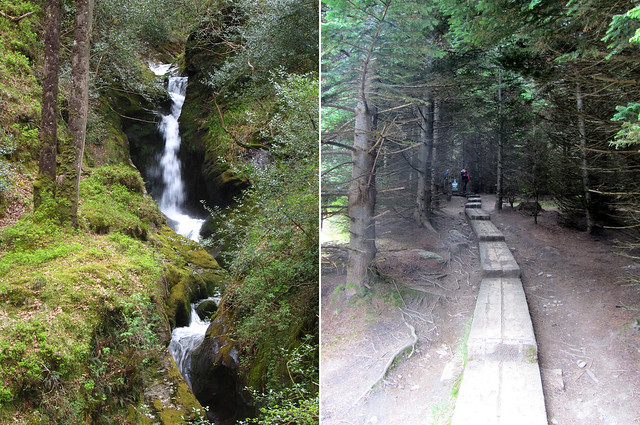
Of the three routes available – “White” Spinc and Glenealo Valley, “Red” Spinc and the Wicklow Way, and “Blue” Spinc (short route) – only the “White” was open when we were there, as coppice management was underway at some point of the other two. We were certainly not in any hurry, spending a little under 4 hours on the route, including lunch picnic and photo breaks. Certain trails form a loop, hence the arrows showing two directions at the same time! ;)
Our walk started up the Spinc, a little steep, that took us first to the small Poulanass Waterfall and later to the boardwalk that will lead us to the cliff side that overlook the valley. The steps are clearly marked, well-maintained, and have anti-slip grilles fitted. They are also narrow, thus occasional steps-off may be required to allow passing of walkers coming from the other direction.
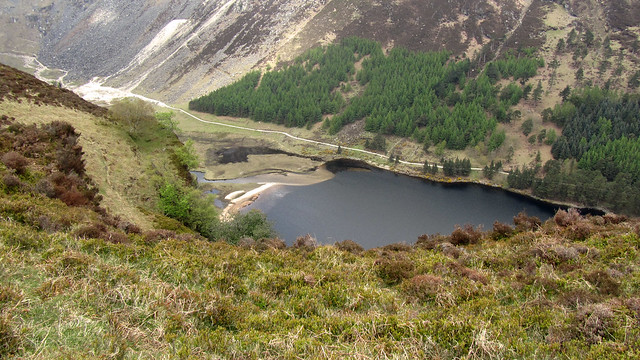
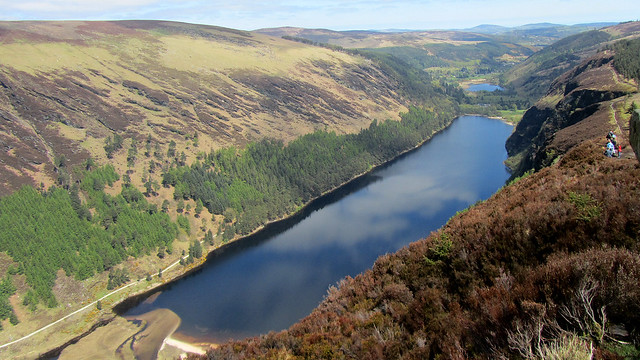

The view point that greeted us at the clearing of Spinc was stunning. We were lucky too that the sun had decided to come out and play for the day, and the sky started to clear into brilliant blue throughout the day. While we had rain jackets in the bag, we had not packed sunscreen with us. As a result, the back of our necks and shoulders bore the brunt from the sunray. Nothing too serious, which was easily soothed using some moisturising cream later in the evening.
All along, we just had to continue the trail that skirts the cliffs, passing occasional bog blankets (which were sitting more in puddle of waters from the rain of the previous day). We paused every so often so we can cast our eyes around, and appreciate the beautiful rolling hills of Wicklow. On this clear day, we could see all the way out to the Irish sea!


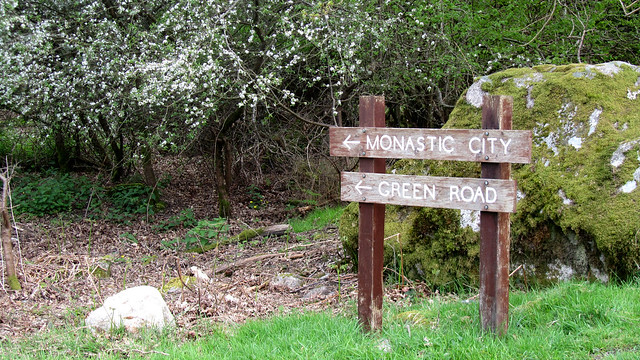
The path to descend went through an old unused mine and rocky trails, and this is the one part of the walk where care was needed since the rough track was peppered with pebbles and rock, along with loose gravels that could easily slip one up. We had another pause at the Upper Lake for one last view of the valley, before making our way to the Glendalough monastic city.
I can’t say I know too much about the monastic city, bar that it has a very iconic round tower and that there used to be many churches within the vicinity, marking it as an important religious site where Christian teaching flourished and a focal point for pilgrimages.

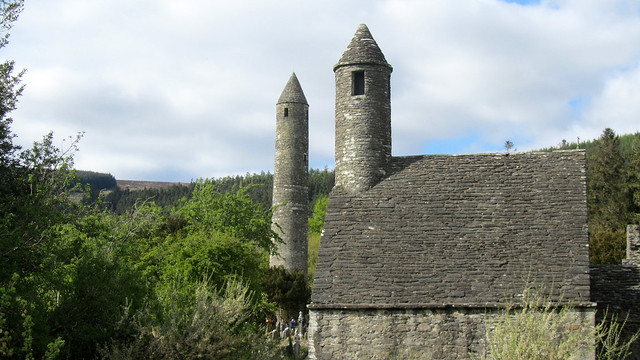
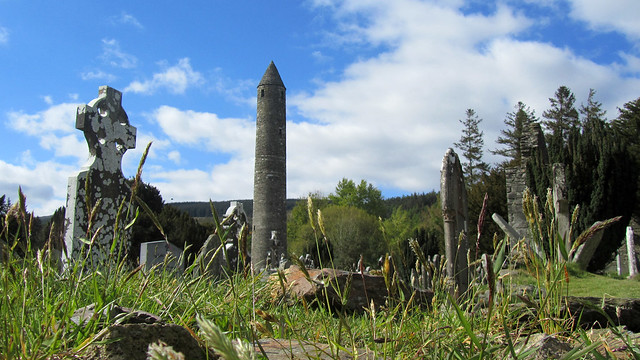
The most significant name one sees here is St Kevin, the priest who founded the monastery here at Glendalough. In fact, St Kevin’s Church (nicknamed “Kitchen”) is the only stone building which still stands pretty much intact. It is not very big, although two-storeys high, and it has a belfry (with square windows) attached to the roof that looks like a half round tower. However, without an access, I can’t tell you what it’s like on the interior.
The reference to St Kevin is also seen near the Upper Lake, as we passed by signs that point to St Kevin’s Cell and St Kevin’s Bed. We didn’t go looking for them though. According to sources online, what remains of St Kevin’s Cell is its foundations to what would have been a beehive hut in the past, while St Kevin’s Bed is a cave by the Upper Lake that was used as a retreat for St Kevin.
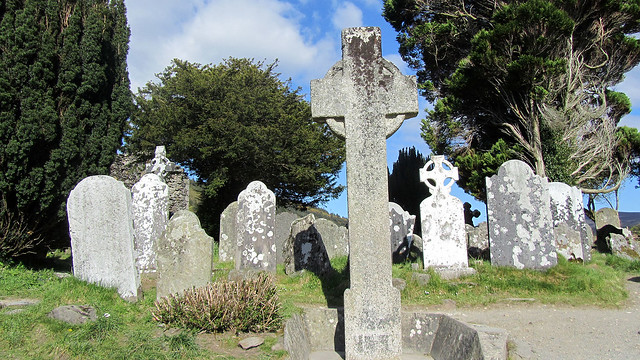

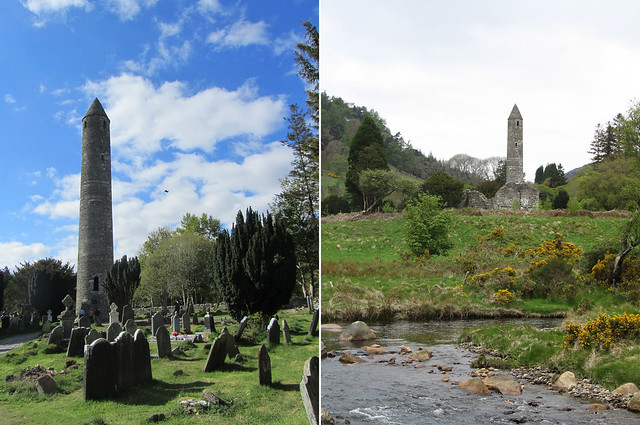
We arrived to Glendalough on a relatively grey morning but when we left, it was a sunny day which only magnified the beauty of the valley. Definitely a place to visit when one is in Dublin, as it is easily accessible by St Kevin’s Bus that runs daily between Dublin and Glendalough, albeit with a limited number of runs (twice a day to Dublin, and once to Glendalough).
We got lucky – we managed to rope my cousin and his wife to drive us and to join us for the walk. ;)












very nice n scenic walk..great weather and the breath taking view at the top!!..the 2nd pic reminds me of the church ruins near A Famosa in malacca ;)
ireland is full of little gem like that :)